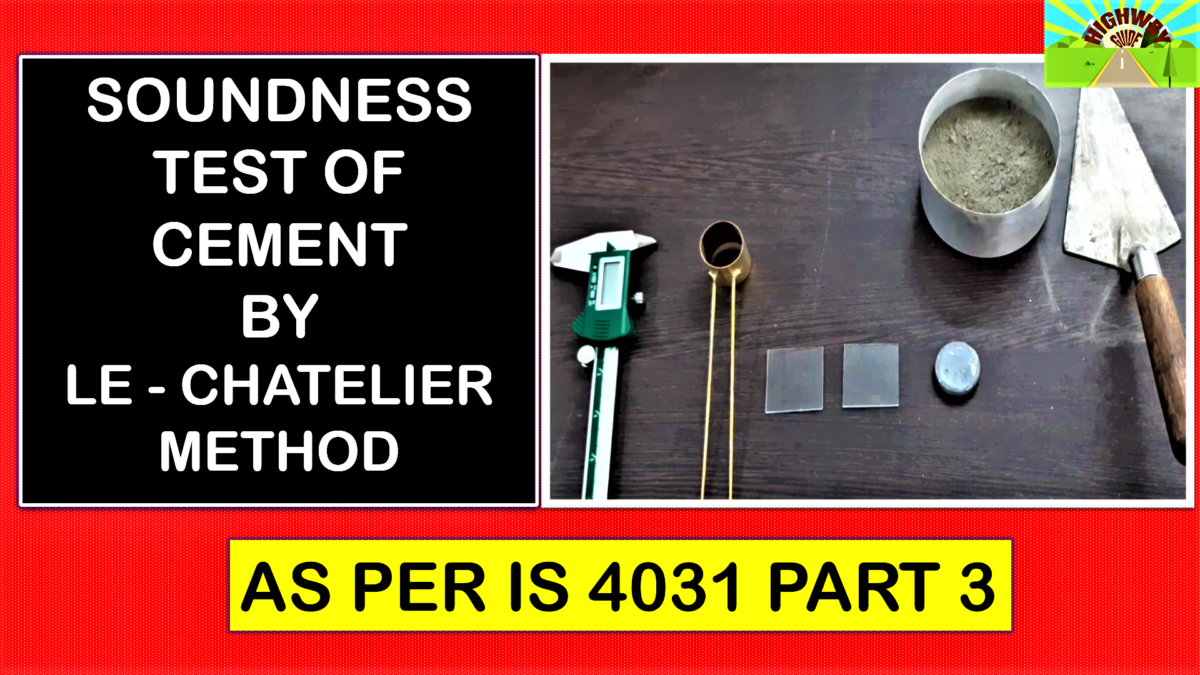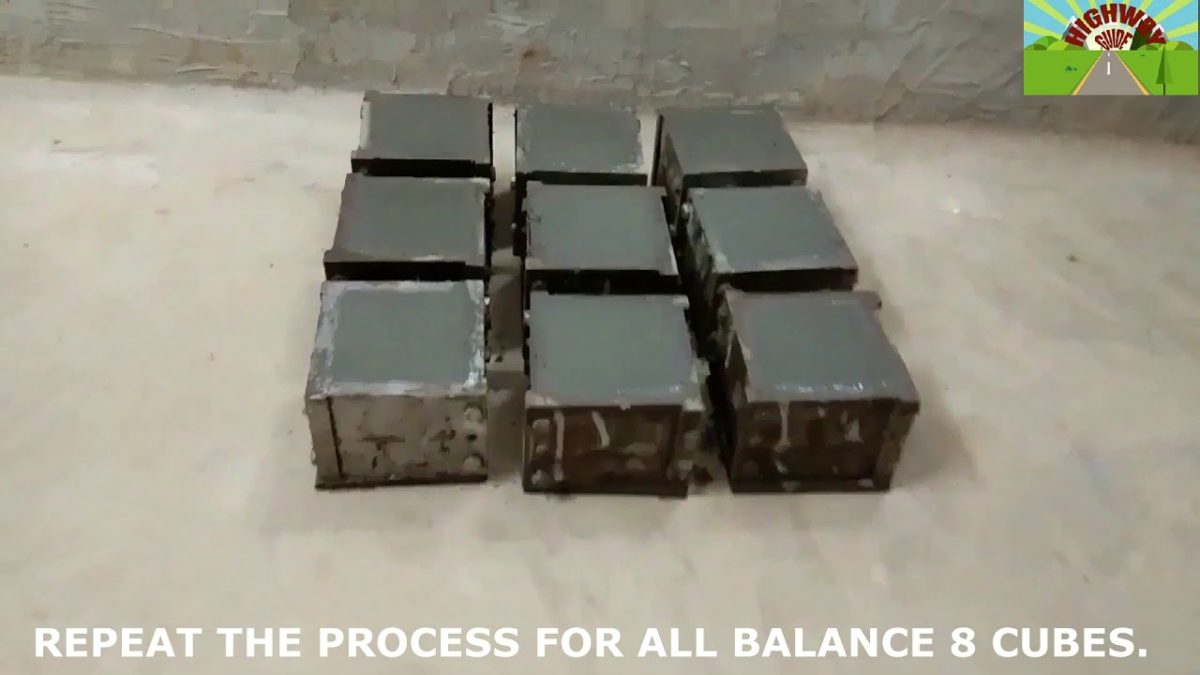1.SCOPE
1.1 This standard IS 4031 ( Part 6 ) covers the procedure of finding out compressive strength of cement: The strength of cement is determined by compressive strength tests, on 70.6 mm mortar cubes, made with specified cement , sand & water mixed & compacted manually with a compacting bar as well as with vibrating machine.
2. SAMPLING AND SELECTION OF TEST SPECIMEN
2.1 . The representative sample of the cement selected as above shall be thoroughly mixed before testing requirements of different equipment used for testing of cement.
3. TEMPERATURE AND HUMIDITY
3.1 The temperature of the testing room, dry material ingredient and water should be maintained at 27 ± 2°C & relative humidity of the chamber or room should be maintained at 65 ± 5 percent.
3.2 The curing tank or box temperature & relative humidity should be maintained at 27 ± 2°C and more than 90 percent respectively
4. GENERAL
4.1 Standard Sand.- The standard sand which is to be used in the test shall confirm to IS: 650 -1966·
5. APPARATUS
5.1 Vibration Machine – Vibration machine conforming to IS : 10080-1982.
5.2 Poking Rod – Poking rod conforming to IS: 10080-1982.
5.3 Cube Mould- The. mould should have a size of 70.6 mm x 70.6 mm x 70.6 size conforming to IS : 10080-1982.
5.4 Gauging Trowel – Gauging trowel having steel blade 100 to 150 mm in length with straight edges weighing 210 ± 10 g.
5.5 Balance – Electronic balance with 1 gm accuracy shall be used.
5.6 Graduated Glass Cylinders – Graduated glass cylinders with capacity of 150 to 200 ml .
6. PREPARATION OF TEST SPECIMENS
6.1 Mix Proportions and Mixing
6.1.1 The temperature of water & test room at the time of mixing operations shall be maintained at 27 ± 2°C. Use Potable water for preparing the cubes.
6.1.2 The cement , standard sand & water for each cube shall be taken as per below mentioned standard :
a.Cement 200 g
b.Standard Sand 600 g ( 200 gm of each grading)
c.Water ( P/4+ 3.0) percent of combined mass of cement and sand, where P is the normal consistency of cement.
If normal consistency of cement is 29.5 (assumed) calculation of water will be done as below:
( P/4+ 3.0) x 1/100 x 800 = ( 29.5/4+ 3.0) x 1/100 x 800 = 83 gram.
6.1.3 Place on a nonporous plate, a mixture of cement and standard sand, Mix it dry with a trowel for one minute and then with water until’ the mixture is of uniform colour. The quantity of water shall be used as calculated from above equation. The mixing time shall be in between 3 to 4 minutes, the mixture shall be rejected if the time is less than 3 minutes and more than 4 minutes and the operation should be repeated with a fresh quantity of cement, sand and water.
6.2 Moulding Specimens
6.2.1 In assembling the moulds ready for use, the sides of the mould shall be made from ferrous metal. All parts shall be robust enough to prevent distortion & the joints between the sides of the mould and between the sides and the base plate shall be coated with oil or grease to prevent leakage of water from mould .
6.2.2 Place the assembled mould on the vibrating table machine vibration by proper holding in position by suitable clamp & shall not be removed until the completion of the vibration period.
6.2.3 Immediately after mixing the mortar properly , place the mortar in the cube mould and rodded with the rod specified rod. The mortar shall be rodded 20 times in about 8 second to eliminate entrained air . Pour the remaining quantity of cement mortar into the hopper of the cube mould and rodded again as done previously for the first layer and then compact the mortar by vibration.
6.2.4 Keep the period of vibration 2 minutes at the speed of 12000 ± 400 vibration per minute.
6.2.5 After the end of vibration, remove the mould with base plate from the machine and make proper smooth finish top surface of the cube mould with the blade of a trowel.
6.3 Curing of Specimen
Keep the prepared cube mould filled in moist closet or moist room or curing tank for 24 hours . After completion of 24 hours , remove the mould form cube and immediately keep in clean fresh water . The water in which the cubes are kept shall be changed after every 7 days and keep on maintaining temperature 27 ± 2°C.
7. Testing
7.1 Take out the three test cubes each for 3 , 7 & 28 days respectively for testing of compressive strength after completion of test age for different cements.
7.1.1 Place the test cube in center of cube testing machine without any packing and apply the load steadily and uniformly , starting from zero at a rate of 35 N/mm²/min.
8. Calculation
8.1 Calculate compressive strength of cement by dividing the maximum load applied to the cubes during the test by the cross-sectional area, calculated from the mean dimensions of the section and shall be expressed to the nearest 0.5 N/mm².For more detail see my video in you tube.








